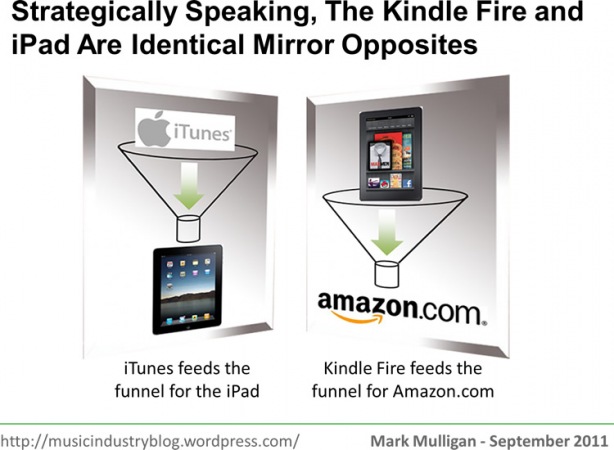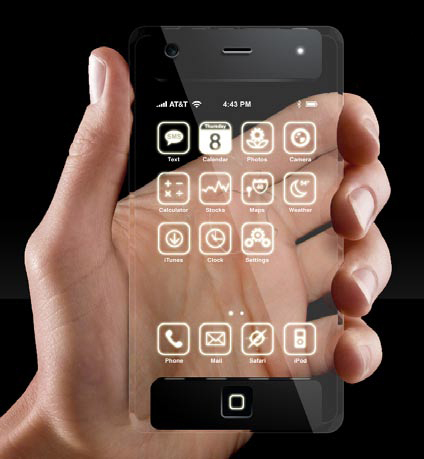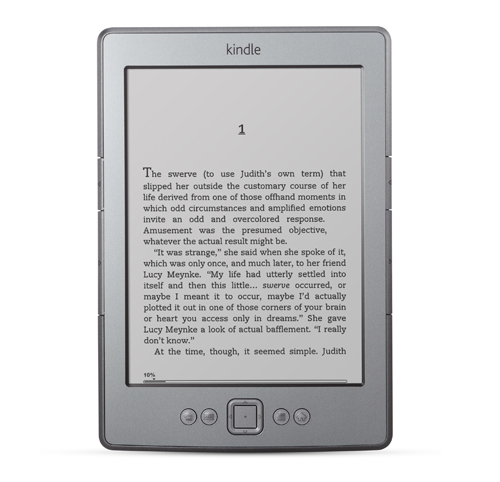VIA Read Write Web – By Dan Rowinski
Month: October 2011
Consumers Will Be Delighted With the iPhone 4S
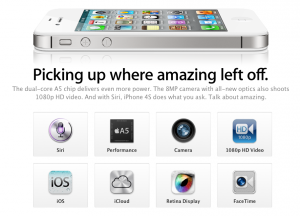 I’ve been reading and digesting much of the post Apple event news where they introduced their newest iPhone, the iPhone 4S. I’ve attended every major Apple product launch event since 2003. The last few years the media hype and anticipation around Apple product launches has reached astronomic proportions.
I’ve been reading and digesting much of the post Apple event news where they introduced their newest iPhone, the iPhone 4S. I’ve attended every major Apple product launch event since 2003. The last few years the media hype and anticipation around Apple product launches has reached astronomic proportions.
Even today post the event I am not surprised to see “disappointed” and “underwhelmed” in the headlines. It seems as though at every launch event for the past few years the question of “did they do enough” gets asked of me by the media.
The media, luckily for Apple, is not Apple’s target customer. In fact at the launch event Apple showed some very telling slides showing statistics that highlighted how much market share in every major personal electronics category is still left for Apple to gain. These slides tell the story of how Apple thinks about the market as a whole and how all their decisions are geared to grow their market share using product strategies that work.
When I look at the Apple’s current iPhone lineup with the 3GS being free with a new contract or the iPhone 4 being $99, I am convinced that now is as good of time as any for consumers to jump into the Apple ecosystem. However the 4S is now the flagship of the iPhone lineup.
The iPhone 4 is arguably the best designed handset in the cellular industry. In my opinion no handset on the market comes close to the iPhone 4 design. For this reason Apple didn’t need to change the design. In fact earlier in the year I argued that Apple didn’t even need to release a new iPhone this year and they would have still stayed the number one smart phone manufacturer. The iPhone 4 is that good so why fix what isn’t broken.
However they did improve on it and as a matter of fact they improved on it all the ways that make it even more useful than its predecessor. They made if faster both in terms of network speed and core performance. They gave it 7x better graphics which will make it one of the most impressive mobile gaming platforms graphics wise to date. They engineered a better antennae to make the phone download and upload data faster as well as deliver better sound call quality. They made the camera significantly better. They made a bunch of improvements that alone make the device attractive.
Apple is still attracting new iPhone customers at alarming rates. By offering the 3GS for free and the already amazing iPhone 4 for $99 and the iPhone 4S starting at $199 they have a very strong holiday lineup.
Design is important but it is only one part of the equation when consumers make buying decisions. The iPhone’s are still the leading objects of desire in the industry for the mass market.
One thing that seems to get left out, that I think is a very powerful point, is that by not changing the iPhone design new customers or those who upgrade will be able to tap into the already vast iPhone 4 accessory ecosystem. Consumers who buy the iPhone 4 or 4S will immediately find a plethora of accessories. This is a very attractive proposition.
Apple’s current tagline for the iPhone 4S is “Picking up where amazing left off.” That is fitting since they are still leading in the realm of handset design. The media may have expected more and the media may be disappointed however I am confident that actual consumers will be delighted with the iPhone 4S. And really that is all that matters to Apple.
[thumbsup group_id=”3173″ display=”both” orderby=”date” order=”ASC” show_group_title=”0″ show_group_desc=”0″ show_item_desc=”0″ show_item_title=”1″ ]
Five Reasons to Upgrade to the iPhone 4S
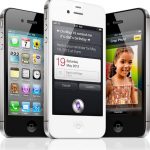 While design enthusiasts may have wanted a smaller, lighter and even thinner iPhone, the fact remains that the current iPhone 4 design is about as thin as you can get a smart phone and still pack it with all of the additional new features that will make it the most powerful and best-selling smart phone on the market.
While design enthusiasts may have wanted a smaller, lighter and even thinner iPhone, the fact remains that the current iPhone 4 design is about as thin as you can get a smart phone and still pack it with all of the additional new features that will make it the most powerful and best-selling smart phone on the market.
What disappointed people may have in the fact that it is identical in design to the last model, is made up by the high-powered A5 chip that delivers 50% more processing power, and a new dual core graphics chip that is 7X faster than the one in iPhone 4. It has a the new signal processor that makes it possible to deliver Siri’s voice command driven personal assistant, the new 8 megapixel camera with enhanced image sensor, the new video processor that delivers stunning video and the dual antenna system that makes calls and wireless sensitivity better than ever.
From an engineering standpoint, this is the most powerful iPhone Apple has ever made and should help them deliver their first 25-27+ million iPhone quarter this holiday season. With the 3GS being free with contract, this phone could finally attract the laggards who hesitated buying an iPhone because of cost. And the iPhone 4 starting at $99, with its dual cameras and capability to do Facetime, will also be in high demand. However, there are millions of users with 3GS contracts that are out of subscription hell and will gladly make the jump to this new phone in huge numbers. And many iPhone 4 users are close to being out of their contract and many of these folks will also upgrade as soon as they can.
From a consumer standpoint, there are five major reasons why a person should upgrade.
The first is the new 8-megapixel camera sensor at 3264 X 2448 which is 60% more pixels than in iPhone 4 that Apple has in the iPhone 4. This includes a new powerful image sensor and will become the gold standard for digital cameras in smart phones. The images are just stunning. They are 30% sharper.
The second reason is the new video sensor that delivers the best video recording on a smart phone available. The demo they showed of a video taken and actually edited on the iPhone 4 S has to be seen to be believed. It now shoots at 1080P. A user would likely now be more than happy to just use their smart phone to take all of their pictures and videos as the quality of this is beyond what most point and shoot cameras deliver.
The third reason to upgrade is for the SIRI voice assistant. This introduces a whole new way to interact with your iPhone. You can ask it things like, what is today’s weather and get an exact answer instantly via voice. Or you can say, set my alarm for 6:00 AM and it does that automatically for you. Or you can ask, what time is it in Paris, France and it reads out that time to you on demand. It can answer hundreds of questions and enact immediate commands to the phone as part of its design.
What’s more if you are driving and hear a message alert, you can just ask it to read the message to you. Or you can just speak it your message and who to send it to and it does that as well. It can also do dictation in messages, email, and in any app that uses a keyboard. Most importantly SIRI and its voice system only works on an iPhone 4S because of its use of this special signal processor that Apple has on this new iPhone.
And the fourth reason is because of the new antennas. Apple has employed a breakthrough in the way antennas work by making them handle incoming and outgoing calls and data signals differently. This enhances quality of service and it goes a long way to delivering a better voice and data experience. Along with their CPU boost and speed gains from the Antenna that let the iPhone 4S operate at 4G speeds even though it is still a 3G phone, should get it a lot of street cred with users.
And the fifth reason to upgrade is because it is a world phone. That means it can handle CDMA and GSM and can switch between networks when traveling in every country around the world. This is great for anyone that has to travel the world for work or pleasure.
Another hot feature for all IOS users will be the new iMessage system that provides free messaging to any IOS device, which now includes all iPod Touches with the new IOS 5 software.
Of course, iCloud and its amazing synchronization engine will be a godsend to those who want to keep all of their music, video and docs always in sync and up-to-date. In fact, I consider iCloud a most important Apple product and one that will actually help define what the cloud is for consumers and force all competitors to follow suit.
Lastly of course, iOS 5 with 200 new features, will deliver much more power and capabilities to all iPhone and iPod Touch users and make them even more indispensable than before.
iOS 5 and iCloud will both be release on Oct 12th.
The new iPhone 4S will ship on Oct 14th.
The 16 gig is $199. The 32 Gig is $299 and a new 64 Gig is available for $399 with contract.
In the US the iPhone 4S will be available on AT&T, Verizon and Sprint. By the end of the year worldwide it will be available in over 70 countries.
The iPhone 5 Launch Will Be Successful
VIA Harvard Business Review Blog – BY Maxwell Wessel
Apple is the Luxury Mall of Media, Amazon its Wal-Mart
VIA The Big Picture Blog – By: Marion Maneker
2 Things I Want in the iPhone 5
I want to dream for one second about the only two things I would love to see in the iPhone 5. After that I want to add some bigger picture perspective.
A Bigger Screen
Studying Apple for as long as I have I know they make very intentional decisions with hardware. It is for that reason that they choose a 3.5 inch display for all their iPhones. In our talks with app developers it is the consistency in screen size that they appreciate in Apple’s ecosystem. Namely because they do not need to worry about variation in hardware or screen size when they create software.
That being said I would love a 4″ screen on my iPhone 5. I have used a number of 4″ screen devices and I think it is or is close to the perfect size for a smart phone.
I don’t believe adding half an inch to the screen size would have any significant impact on any of the existing iPhone apps, especially if developers have created universal apps.
Voice to Text Speech Recognition
The only reason this feature does not exist today in iOS is because the technology is not perfect. As Steve Jobs has famously repeated when they launch new groundbreaking features “it just works.”
The challenge with voice to text speech recognition is that it just works 70% of the time. In that 70% of accuracy it needs a nearly perfectly quiet environment. My guess is that Apple would want a higher accuracy rating as well as some new technology that doesn’t require near silence to work correctly.
These however are all innovations in voice to text Apple is capable of and hopefully working on. They do have some minimal voice command technology in current iOS software but I’d love to see full voice to text supported.
The Bigger Picture
Now if you are paying attention to the world of smart phones you will know that both of those features I hope for are available in the Android ecosystem of hardware. This leads to my bigger picture point that hardware is not the only buying decision going on in the minds of consumers. We live in a world where the experience with the software is beginning to play a larger role in the decision-making process.
Most consumers do not shop on specs.
The hardware is important but we live in a software world. Regardless of what Apple releases hardware wise tomorrow I will go out on a limb now and guarantee it will be the sexiest smart phone in existence. This is because Apple’s hardware design passion is second to none. This is why even if my two feature requests don’t come to the iPhone 5, I will not be disappointed.
However as the saying goes within Apple “those who serious about software should also be serious about hardware.” As I will point out in a column later this week Apple is really a software company.
Putting this all in perspective the user experience, the apps, the Apple ecosystem are all reasons why I consciously choose Apple products. Even though there are devices on the market with features that I do desire, I am willing to make the trade-off. Primarily because those few features do not outweigh all the other areas where the Apple experience is superior – in my opinion.
A $299 Amazon Kindle Fire- What It Could Be
Last week the industry was engrossed in the Amazon Kindle Fire launch. There was lots of excitement, speculation and  many questions on it. The $199 price point was one of the biggest points of excitement, particularly in that it was less than half the price of the Apple iPad 2. What could a $299 Fire look like? What features and use cases could it support over the $199 version?
many questions on it. The $199 price point was one of the biggest points of excitement, particularly in that it was less than half the price of the Apple iPad 2. What could a $299 Fire look like? What features and use cases could it support over the $199 version?
Design Strategy
Every company needs a focused strategy, particularly in the risky tablet market, and Amazon surely has one. Amazon must balance inexpensive tablet “must haves” with ways to monetize their store. That’s why consumers can buy an inexpensive tablet and Amazon doesn’t need to make 40% gross margins. Their bet is that Fire consumers will buy their books, movies, TV shows, music, magazines, and maybe even durables. So everything needs to lead to an Amazon purchase or be a required element.
Operating System
Amazon will stick with Android 2.X as their base as it’s the only OS that Google has opened up. Google has yet to open up Honeycomb, even as Ice Cream Sandwich (ICS) is around the corner. If Google opens up ICS, they would want to move there for many reasons. First, they get access to larger screens, 10″ all the way to the TV. Secondly, they would need to ask less of the developers to modify their apps to work decent on a 10″ display.
Display
The display would most likely be a 10.1″, 1,280×800, IPS display. This is where the current cost break-point is right now. The other possibility is 1,024×600 display, given these are shipped en-masse on netbooks and mini-notebooks. Amazon could claim “HD” with both, but with x800 it would be “more HD accurate” given it could support real 1,280×720 (720P) movies. Also at x800 they can claim that the resolution is better than the iPad 2 at 1,024×768. That is, until the rumored iPad 3 comes out with Retina Display.
Web Sites versus Apps
One challenge Amazon will have with a 10.1” display and Android 2.X is the app’s appearance. It’s a stretch for Android 2.X apps to even look good on a 7” display. Many of them are blocky, because they were designed for a maximum of 5” displays. At a minimum, Amazon would need to write custom apps for mail, calendar, and address books. I can see Amazon encouraging users to use web sites via Silk versus apps as well and they would need to beef up Silk’s browser to do this. Today’s tablet browsers have limitations, limitations Amazon’s Silk could remove. One simple issue is tablet browser’s ability to access the file system. The iPad’s browser, for example, is unable to upload photos to Picasa. This is why you need an app for that. Silk could conceivably remove the barrier.
Processor, Storage and RAM
While it doesn’t necessarily need more of this for a better experience, the competitive optics demand a bump, particularly on storage. There’s no reason to move beyond the OMAP 4, particularly if the $199 Fire has the TI 4430, which can easily do 1080P HD video. RAM could very well stay at 512MB, but for the optics, would most likely move to 1GB. Storage would definitely bump beyond 8GB to at least 16GB. Apple has made storage the break point for iPad, and Amazon knows they cannot be at a disadvantage, even with Amazon Cloud Storage as the backup.
Living Room Entertainment with Remote Control
Here’s where it gets interesting. The $199 Fire is designed for individual video content. The step-up $299 could be positioned as the living room alternative to the “over the top” set top box. By providing a simple HDMI 1.4 port out and a remote control, consumers could watch all the 1080P TV and movies from Amazon Prime and Amazon VOD. Consumers are always looking for a way to justify that extra $100 and this alone could be the reason. To accomplish the same this on the iPad, the consumer needs to buy the expensive HDMI connector and have an iPhone, load the “Remote App”, and setup AirPlay. The other Apple alternative is to buy an Apple TV, and extra $99. Amazon could have a cost and simplicity message over Apple in the living room.
Optional Living Room Dock
Taking the living room video usage to the next level, Amazon could offer an optional $29.99 dock which makes living room video even easier. Place the $299 Fire into the dock and it gets power, HDMI out to the HDTV, speaker out, and Ethernet. This would be an easy way to connect the Fire to the TV. It also provides another justification to buy this over an “expensive” $499 tablet that doesn’t provide this option.
Camera and Mic Enable “Entertainment Assistant” App
If the $299 Fire has a front facing camera and microphone, Amazon could “listen” or “watch” the content you are consuming in your living room. This would be user-driven as not to be “creepy”. Think of it as Pandora for all types of content, including TV shows and movies. The user could point the Fire to the TV, press a button and a few seconds, an in-context search result would result. In addition to the news and social media results, it would also show relevant results from the Amazon store.
All it would take is for Amazon to index what they already have. They have access to 18M pieces of content; TV shows, movies, songs, books, and magazines. With Silk, they will also know every web site you access, where you shop, what you buy and how long you stay there.
Even without any access to the rich Amazon data, simple Evernote was able to extract “Dallas” from this photo. Google Goggles is able to extract “Fox Sports” too. Now imagine this capability with Amazon’s access to basically all content and wherever you have ever browsed.
Camera to Improve Shopping
At $299, consumers will expect a camera, maybe even two. What’s its primary role? Shopping, of course. What? Yes. Like I said before, everything needs to lead to the Amazon store. The camera could serve as an augmented reality try-before-you-buy feature. Amazon is great at selling physical books, DVDs, electronics, and toys, but what about items that are better sold in a retail store?
- Clothing: In conjunction with the TV and remote, see what different clothes look like on you and get the perfect fit, too. The camera is taking videos of you and overlays the clothes on you. What to change the color or size? Just use the remote.
- Jewelry: Watches are interesting. Will the face be too big on the wrist? Is it too masculine or feminine? Use the Fire to see what it looks on you before you buy it.
- Shoes: Afraid of getting the wrong size or that on you it looks ugly? Print the Amazon Sizing Grid. Take the picture with the Fire of your feet on the grid. See how it looks on you; get the right size shoe, including the correct width. Now that it has this much info, why not now introduce custom show sizes?
- Home: How will those towels look in your bathroom? That patio furniture on your patio? That lamp on your end table?
- You get the idea; use the camera with augmented reality to make the shopping experience more fun and with less risk.
Camera for Universal Videoconferencing
What if your parents use Skype and you use Apple Facetime? One of you needs to change programs or you don’t get to communicate with each other. Amazon, with its data center prowess, could become the “universal adapter” for video services, and make money doing it. Skype, FaceTime, Google Video, Yahoo Messenger, it doesn’t matter. If you use Amazon’s service, you can connect to all of them. A stretch? Maybe, but remember, via Silk they know every site you go to and have a login as well. What’s to stop from the “embracing and extending” if they can further lock in customers?
A Note on Living Room Gaming
Amazon could relatively easily use the dock above, the included remote to enter living room gaming. But they have a big issue. Android 2.X looks horrible on the big screen. Even Angry Birds. I have tried racing games, too. So Amazon would need to further break, or fork, from stock Android to make this happen. Developers would need to do this, too. When or if Google opens up Ice Cream Sandwich could be the time this happens. I cannot imagine Amazon going after living room gaming without ICS, although tempting.
Conclusion
I have no inside information whatsoever on any future Amazon Kindle Fire. BUT, it only makes sense for Amazon to introduce a higher-priced, higher-feature tablet to intercept the 10″ competitors. Also, given Amazon’s business model, these features must drive Amazon.com store revenue, too. This $299 Fire as I have laid out does all of these things.
The New Kindles=Razor and Razor Blades with eBook Readers
The new Kindles, with prices at $79 and $99 finally introduces the concept of the razor and razor blade business model to eBooks. We are all familiar with the idea of razor companies creating very cheap razors and then getting people to come back and buy a never-ending supply of razor blades to use for shaving.
 We in the tech world already have a product that fits a similar model with printers and the continual need for ink. Printer makers make next to nothing with the printer hardware and make all of the money on the ink.
We in the tech world already have a product that fits a similar model with printers and the continual need for ink. Printer makers make next to nothing with the printer hardware and make all of the money on the ink.
Now Amazon is blazing new trails with their two new eBook readers at price points that are almost give away the hardware. This is quite an interesting turn of events in the eBook reader market. When the Kindle first came out it was $399. The only people who bought it at that price were what we call early adopters. However, they became hooked on this eReader and once the first Kindle established that this product category was not a fluke, the competitive market kicked in. Within two years of the Kindle’s release, the competitors undercut the Kindle’s price by as much as $200.
But as more and more people bought the Kindle, Amazon was able to get better deals from suppliers and their costs came down as well. Last year they lowered the Kindle’s price, with ads to as low as $129. But with the new Kindles they break the magical $100 dollar price barrier and in turn have basically introduced to the market the eBook equivalent of the razor and razor blade business model for electronic publishing.
This is especially important since they have over 1 million commercially published books for purchase as well as hundreds of thousands of free books to add to their overall eBook distribution. What this does is virtually assures that Amazon maintains its lead as the world’s top eBook publisher.
This move should not be too much of a surprise though. The basic law of manufacturing is that the more you make, the lower the prices of the product. Once Amazon was building a million units at a time, they started getting preferential pricing on every component. Over the life of the Kindle Amazon has sold millions of these devices thus making it possible to finally break the $99 dollar barrier.
Although some smaller brands had already broken $99 dollars, it is Amazon’s move now that changes the game completely. The end result is that the market will move even faster from physical books to electronic books, magazines, newspapers and more. Many more people will, at this price, be enticed to jump on the eBook bandwagon and you can bet that both of these models will be hot sellers for the holiday.
But the fact that Amazon is driving this razor/razor blade model into ePublishing is very important. It will set the tone and define the role of standalone eBooks and push the concept of ePublishing into the mainstream even faster than many of us had expected.
It is a very good move for their business and it solidifies Jeff Bezos’s overall goal to become the worlds #1 eBook publisher and it will more than jumpstart the next generation of electronic publishing by making book reader affordable to all.
Google’s Interesting Week
Jean-Louis Gassee‘s perspectives on Google, Samsung, and Amazon, via Monday Note.
There Already Is a Cheap iPhone
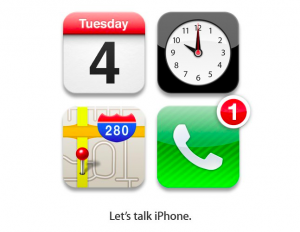 The oddest thing about the rumors bubbling around Tuesday Apple media event is the speculation about a “cheap” iPhone. Gizmodo, for example, published blurry pictures of quality-control rejects from Foxconn’s new plant in Brazil as “proof” of the imminent new cheap iPhone.
The oddest thing about the rumors bubbling around Tuesday Apple media event is the speculation about a “cheap” iPhone. Gizmodo, for example, published blurry pictures of quality-control rejects from Foxconn’s new plant in Brazil as “proof” of the imminent new cheap iPhone.
We know very, very little about the new hardware that Apple will announce; after losing an iPhone 4 prototype the last time around, Apple has done an even better than usual job of controlling leaks this time. But we can be very sure of what the “cheap” iPhone will be.
Apple’s practice for iPhone releases has been to keep the one-back model in the lineup while introducing a new phone as the premium product. At AT&T today, you can buy a 16 gigabyte iPhone 4 for $199 or an 8 GB iPhone 3GS for $49 (Verizon only has the iPhone 4 because there never was a CDMA version of the 3GS.)
So whatever the new iPhone model is and whatever it is called, we can expect the 15-month-old iPhone 4 to continue to be available, at sharply reduced prices. Maybe Apple will shave the price a bit by offering an 8 GB version, maybe not. But Apple has already said that the new iOS 5.0 software will run on the older iPhone, so it could be an attractive buy.




